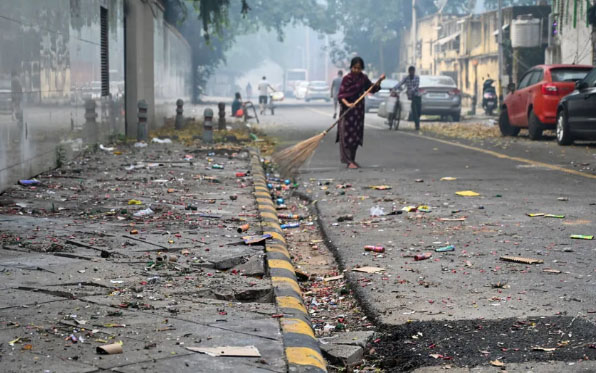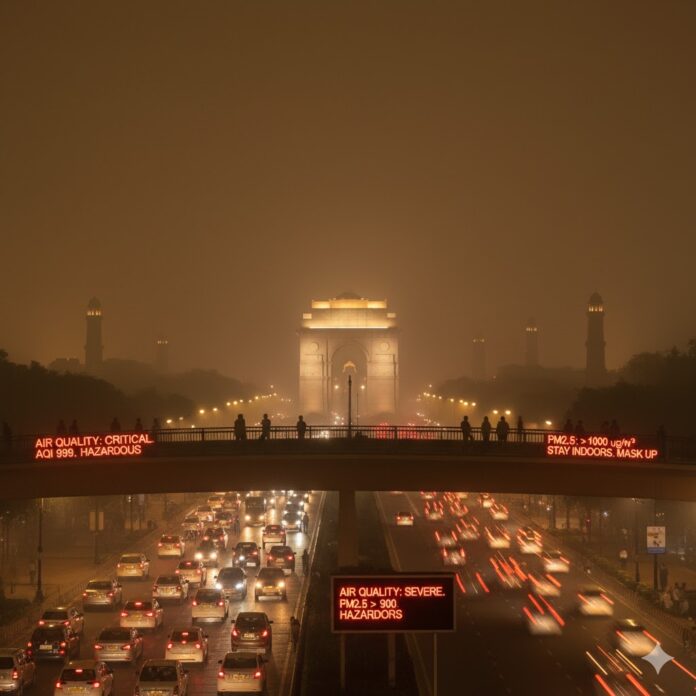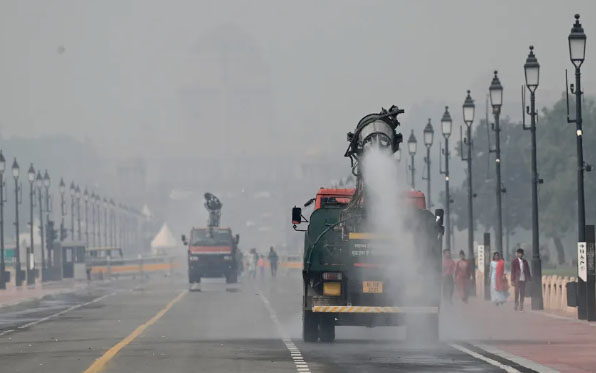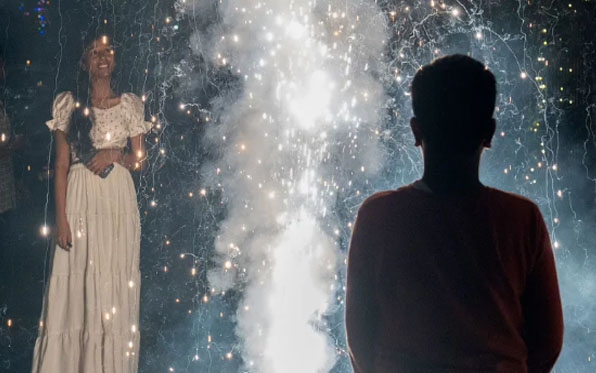Each year as the festival of lights, Diwali, brightens homes and skies across India, the glow of fireworks masks a much darker reality. In the wake of the celebrations, New Delhi — the Indian capital — plunged into a thick haze of toxic air, earning the ignominious label of having the world’s most polluted major-city air in the immediate aftermath.
A rapid dive into dangerous air
On 21 October 2025, the city awoke to air quality levels that health experts preferred not to breathe. According to global monitoring firm IQAir, Delhi’s air quality index (AQI) soared to 442, placing it at the very top of the world’s polluted cities. The concentration of fine particulate matter (PM2.5) exceeded 59 times the level recommended by the World Health Organization.
In the two days following Diwali, many areas of Delhi recorded AQI values in the “very poor” to “severe” categories, with readings in some districts crossing the 400 mark.
Research by environmental analysts shows that post-Diwali PM2.5 averages approached 488 µg/m³ — more than three times the pre-festival average of about 156.6 µg/m³.
Why the sudden spike?
Several interlinked factors combined to choke the capital’s air.
- Fireworks emissions: Despite efforts to promote “green crackers” designed to emit 30-50% fewer pollutants, widespread use of conventional firecrackers flouted time and quality restrictions.
- Stagnant weather and inversion layers: Post-festival weather conditions — cooling temperatures, low wind speeds, and an inversion layer — trapped pollutants near ground level, preventing dispersion.
- Underlying seasonal smog: As Delhi enters the post-monsoon winter season, it is already prone to smog from vehicle emissions, construction dust, and agricultural fires from neighbouring states.
- Reduced but still relevant stubble burning: Though stubble burning in Punjab and Haryana this October reportedly decreased by about 77 %, the fire-cracker surge more than offset that improvement in the short term.
The human cost and visibility of the crisis
The smog was hardly invisible. Residents reported severely reduced visibility, choking haze over major road-arteries and monuments, and immediate symptoms — burning eyes, throat irritation, coughing.
For children, the elderly, and those with respiratory illnesses, exposure to such levels of PM2.5 can raise risks of asthma attacks, cardiovascular strain, and even long-term lung damage.
What’s being done — and what still needs to happen
Authorities in Delhi and the surrounding National Capital Region (NCR) activated the “Graded Response Action Plan” (GRAP) to combat the worsening pollution: restricting construction, halting certain vehicle use, banning generator sets in some zones.
The Municipal Corporation of Delhi (MCD) is dispatching sanitation teams and deploying anti-smog guns in some areas.
Nevertheless, analysts warn that relying on short-term fire-cracker bans is insufficient. Long-term structural reforms are needed: stricter regulation and enforcement of fire-crackers, accelerated transition to clean public transport and energy, better crop-residue management in neighbouring states, and improved urban planning to avoid pollutant trapping.

Looking ahead
As the seasonal smog period sets in, Delhi’s air quality may remain hazardous for several days. Forecasts suggest little improvement unless meteorological conditions change and pollutant sources are rapidly mitigated.
The festival of lights has passed — but the glow of fireworks has left a dark haze that dims not only the skies, but potentially the health of millions of residents.
This post-Diwali crisis in New Delhi underscores the complex interplay between cultural festivities, urban emissions, meteorology and public health. To truly break the cycle of toxic air, the city—and the nation—must move beyond reactive measures and adopt sustained, systemic change.






